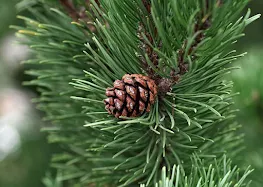The Common Nettle is a herbaceous plant from the Urticaceae family, found abundantly across Europe, Asia, and North America. It is widely known for its medicinal properties, as well as its stinging hairs that cause skin irritation upon contact. Despite this, nettle is highly valued in herbal medicine and is commonly used in teas, extracts, and ointments.
Characteristics
Common nettle is a perennial plant that grows to a height of 30-120 cm. It has upright stems with jagged, oval leaves that are covered with stinging hairs. The flowers are small, green, and grow in clusters. Nettle thrives in moist, nitrogen-rich soils and can be found in fields, roadsides, forests, and even gardens.
Health Benefits
Common nettle contains a variety of beneficial compounds, including vitamins (C, A, K, and B vitamins), minerals (iron, calcium, magnesium, potassium), flavonoids, organic acids, and chlorophyll. Due to these compounds, nettle has numerous health benefits:
- Anti-inflammatory and pain-relieving properties: Nettle helps in treating inflammatory conditions, particularly in cases of arthritis and joint inflammation.
- Circulatory support: Nettle improves circulation, lowers blood pressure, and aids in the treatment of varicose veins.
- Diuretic action: Nettle has a diuretic effect, helping to flush out toxins from the body and supporting the treatment of urinary tract infections.
- Immune system support: Thanks to its high vitamin C content, nettle strengthens the immune system and helps fight infections.
- Skin and hair health: Nettle improves skin health, helping treat acne and other skin conditions. It also strengthens hair, preventing hair loss.
- Detoxifying properties: Nettle has detoxifying effects, supporting the body in eliminating waste and toxins.
Uses
- Teas and herbal infusions: Nettle is commonly used to make teas or infusions that help treat urinary, circulatory, and skin-related issues.
- Extracts and tinctures: Nettle is used to prepare alcoholic extracts that aid in reducing inflammation and boosting immunity.
- Ointments and creams: Nettle is included in ointments used to treat joint pain, muscle aches, and skin issues.
- Dietary supplements: Nettle is available in tablet or capsule form to support circulation, skin, and hair health.
Recipes
1. Nettle Tea for Detoxification:
- Ingredients: 1 tablespoon dried nettle leaves, 1 cup boiling water
- Preparation: Pour boiling water over the dried nettle leaves and steep for 10-15 minutes. Drink 1-2 cups daily to support detoxification.
2. Diuretic Nettle Infusion:
- Ingredients: 1 tablespoon dried nettle leaves, 1 cup boiling water
- Preparation: Pour boiling water over the nettle leaves and steep for 10 minutes. Drink 1 cup daily to help improve kidney function and treat urinary tract infections.
3. Nettle Ointment for Joint Pain:
- Ingredients: 50 g dried nettle leaves, 50 g petroleum jelly
- Preparation: Grind the dried nettle leaves into powder and mix with petroleum jelly. Apply the ointment to sore joints 2-3 times daily for relief.
Cultivation and Care
Common nettle is a plant that can be cultivated in gardens or collected from the wild. It thrives in moist, nitrogen-rich soils and prefers sunny or partially shaded locations. When harvesting nettle, it's important to wear gloves, as the plant has stinging hairs that can cause skin irritation. Nettle grows well in shady areas such as forests or along riverbanks.
The Common Nettle is a highly valuable medicinal plant with a wide range of uses. Its anti-inflammatory, diuretic, detoxifying, and circulatory benefits make it a key component in natural medicine.







